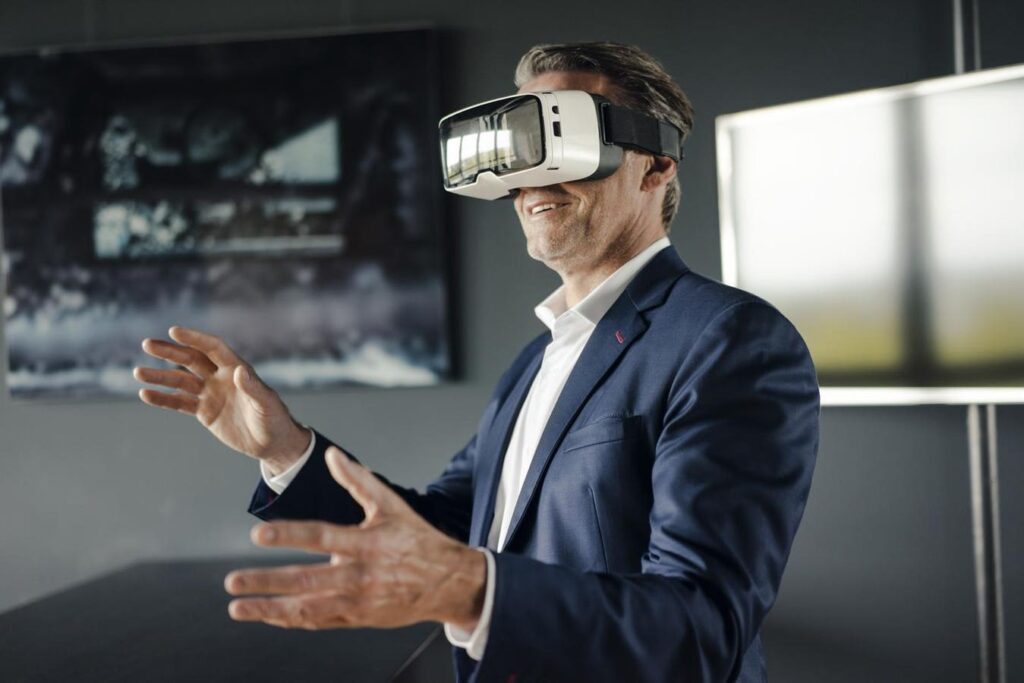Oleg Fonarov is the founder and CEO of Program-Acea software engineering, Web3 development and digital transformation company.
Two hot topics, two areas with great potential for businesses. This is how NFTs and the metaverse can be described. While these concepts generated a lot of media buzz, headlines, and interest, they generated just as many questions.
While many companies are still trying to figure out what these things mean and what their role is, I’m here to give you some insight based on my company’s experience creating these types of solutions. Strap in and get ready to navigate the quirky and promising world of NFTs and the metaverse.
Explain the terminology
A solid grasp of these two concepts is crucial to capitalizing on their strengths.
• The metaverse. This is a theoretical concept of a 3D digital world that you enter through a virtual reality headset. In this virtual world, you have a “body” (avatar) that you can personalize, a house to fill with the objects you like and hundreds of spaces to visit. You can interact with other users, work, play games, and perform most activities that you do in daily life.
The Metaverse is useful because it greatly reduces our need to travel and use physical resources. In a 3D world, we can view and interact with any object without spending much effort and time on it. We can browse activities, discussions, locations and data with a simple tap. Instead of switching between apps and a web browser, everything is connected and accessible in this digital world.
• NFTs. These are non-fungible tokens – 100% unique tokens. You can think of them as certificates of ownership that exist on the blockchain. They are created when a digital file (usually an image, video, or GIF) is created. This means that a certificate of ownership and originality is generated via cryptocurrency (usually Ethereum) and sold/granted to the new owner.
NFTs are useful because art and digital assets are known to be easy to steal and copy. Although NFTs cannot prevent someone from stealing digital assets, they provide neutral and unbiased confirmation of the designated owner. If we ever see NFTs incorporated into copyright law, they could also serve as evidence against the misuse of digital assets.
NFT Uses in the Metaverse
Since NFTs are typically associated with websites and transactions made through web browsers, and the metaverse is primarily based on virtual reality, there can be some confusion about their common ground – and so on. there is in the first place. Fortunately, despite the relative newness of the two concepts, several companies have already found creative and successful ways to use them simultaneously.
1. Virtual market. With applications like VRChat, communication spaces in VR are already boomingand it’s not a big leap to assume that these spaces can also serve as fertile trading grounds for NFTs. Sellers can easily provide links and previews to assets on the web or create assets directly in the VR landscape.
VR and NFT markets can attract many brands across various industries, and Nike is a good example. It’s already dip your toes into the metaverse with its own virtual “Nikeland” and has now acquired a studio (RTFKT) known for creating product NFTs. Perhaps it’s only a matter of time before the two concepts collide in “Nikeworld.”
2. Art gallery. Virtual reality is perhaps the best possible platform (outside of an actual brick-and-mortar building) for viewing art. You can see it up close, in every detail and from every angle. This type of solution differs from a marketplace because the prices are already fixed (and not negotiated), the assets are all of the same type (artistic compositions) and the atmosphere is much more relaxed.
For example, many museums are currently placing NFT artworks in metaverses such as Сryptovoxels, powered by the Ethereum blockchain. According to The Art Newspaper, Cryptovoxels hosts “art galleries and museums, including the San Francisco Museum of Modern Art and FC Francisco Carolinum Linz, Austria.”
3. New frontiers. Real estate can be a pretty lucrative industry to work in in the physical world, and the same could be true for the metaverse. We are not talking about real houses sold digitally, but rather digital lands and territories sold partially or completely for further user development.
This case is more easily illustrated by an example. Decentraland is a virtual territory where plots of land can be sold as an NFTand everything is represented in 3D. This “country” has its own cryptocurrency and should enter the metaverse (making the world accessible to VR users) later in 2022.
How to implement a metaverse with NFTs
As you may have noticed, the metaverse is still a fairly new concept, and only a handful of companies have already built real solutions in this area that implement NFTs. So, if you see a use case for the combination in your business and have the resources to make it happen, you could be one of the first companies in your industry to take advantage of these two trends.
Since most companies don’t employ full-time VR developers, we might recommend looking to work with a company that has many years of experience creating immersive apps. Companies might consider going this route even if they have a few local developers, as they might lack platform-specific knowledge of VR software, such as building with Unity and Unreal or putting implementation of movement tracking. Knowledge of blockchain and NFT mining will also be useful, unless you want to take on these technical aspects yourself.
Hopefully you now know the main ideas behind both concepts and have an idea of where the market is heading. If you choose to adopt the metaverse and NFTs in your business, this could be a great opportunity to stand out from your competitors and present your business as a forward-looking company.
Forbes Technology Council is an invitation-only community for world-class CIOs, CTOs and technology executives. Am I eligible?


